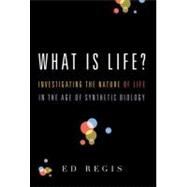
Note: Supplemental materials are not guaranteed with Rental or Used book purchases.
Purchase Benefits
Looking to rent a book? Rent What Is Life? Investigating the Nature of Life in the Age of Synthetic Biology [ISBN: 9780195383416] for the semester, quarter, and short term or search our site for other textbooks by Regis, Ed. Renting a textbook can save you up to 90% from the cost of buying.
| Prologue: The Second Creation | |
| Birth of a Cell | |
| Schrodinger | |
| Unlocking the Secrets of Life | |
| The Fiftieth-Anniversary Coronation and Dismissal | |
| ATP and the Meaning of Life | |
| Origins | |
| The Spandrels of San Marco | |
| The Twilight Zone | |
| The Synthetic Cell Turing Test | |
| What Is Life? | |
| Notes | |
| Bibliography | |
| Acknowledgments | |
| Index | |
| Table of Contents provided by Publisher. All Rights Reserved. |
The New copy of this book will include any supplemental materials advertised. Please check the title of the book to determine if it should include any access cards, study guides, lab manuals, CDs, etc.
The Used, Rental and eBook copies of this book are not guaranteed to include any supplemental materials. Typically, only the book itself is included. This is true even if the title states it includes any access cards, study guides, lab manuals, CDs, etc.